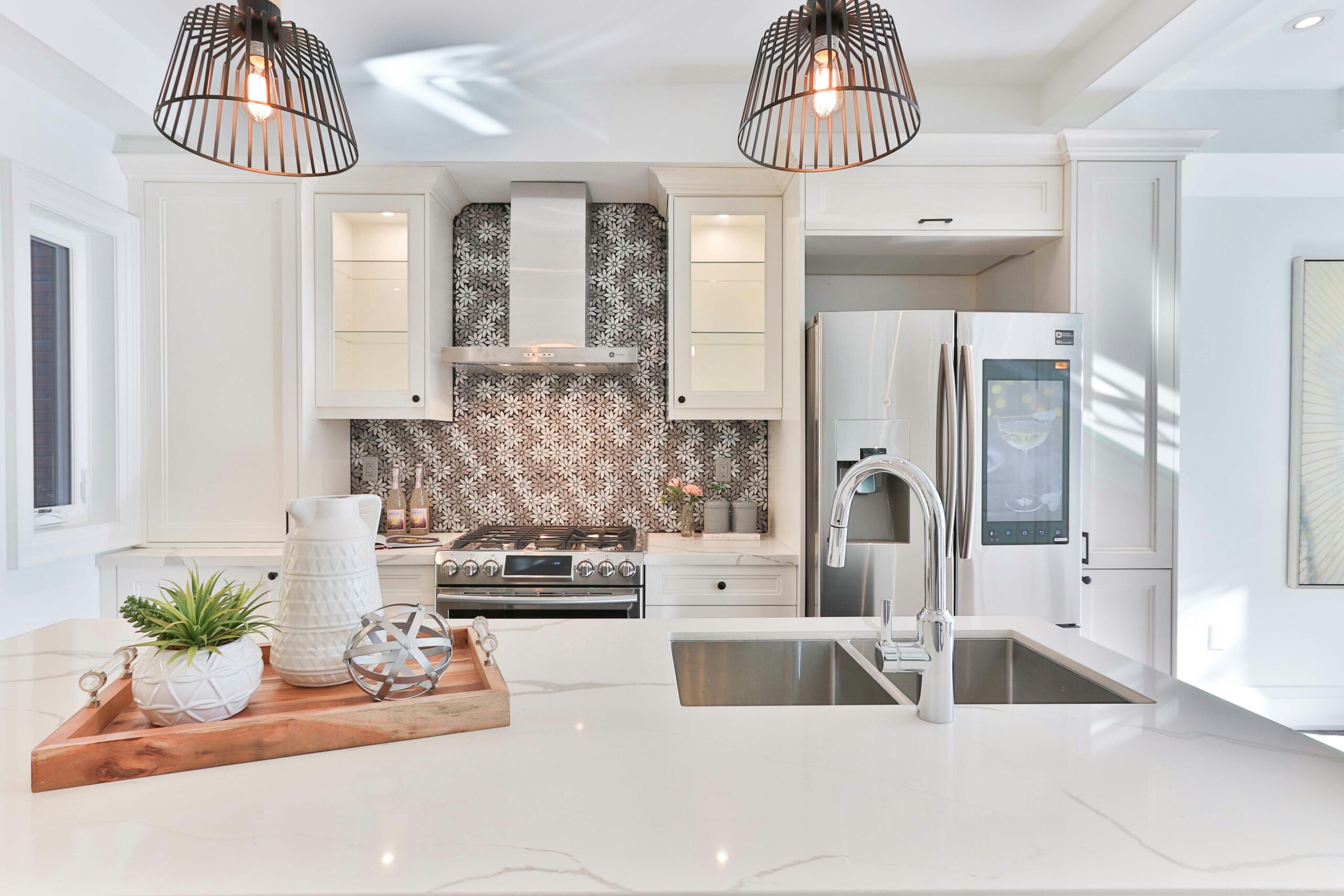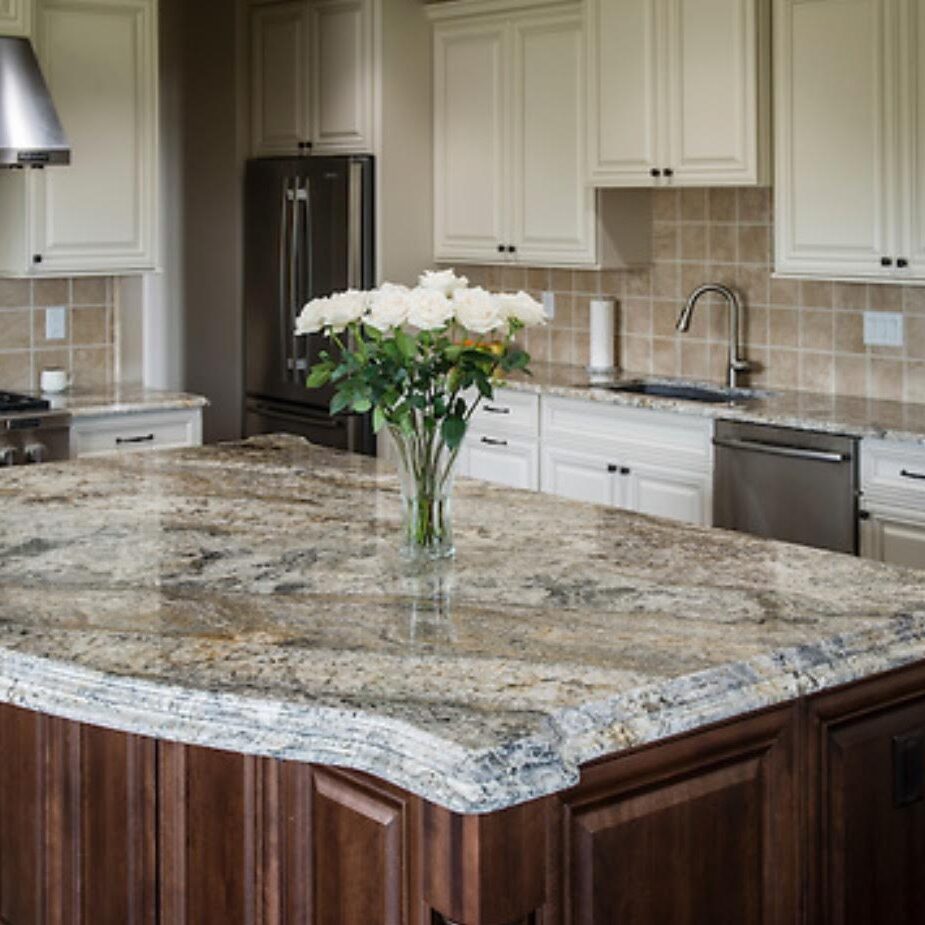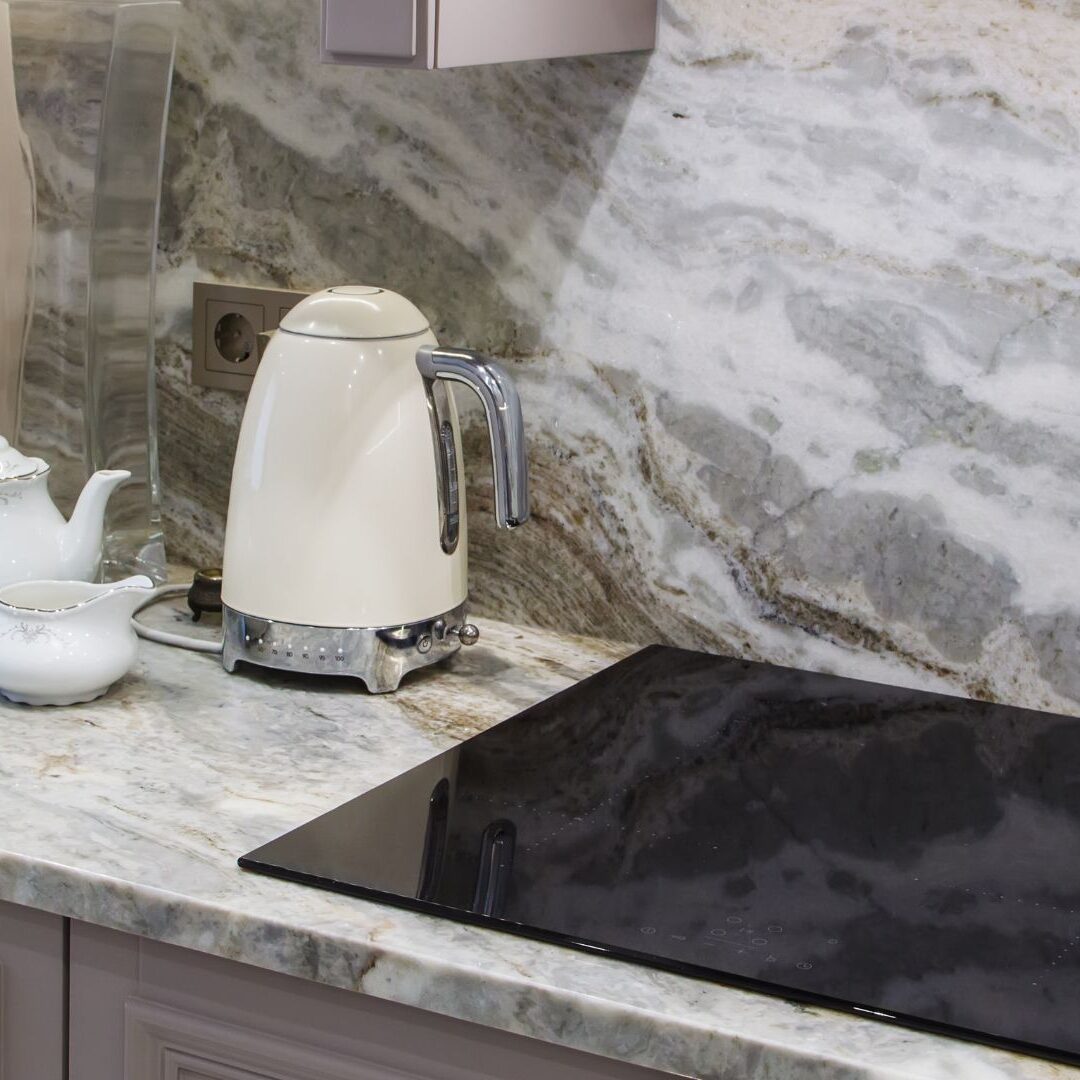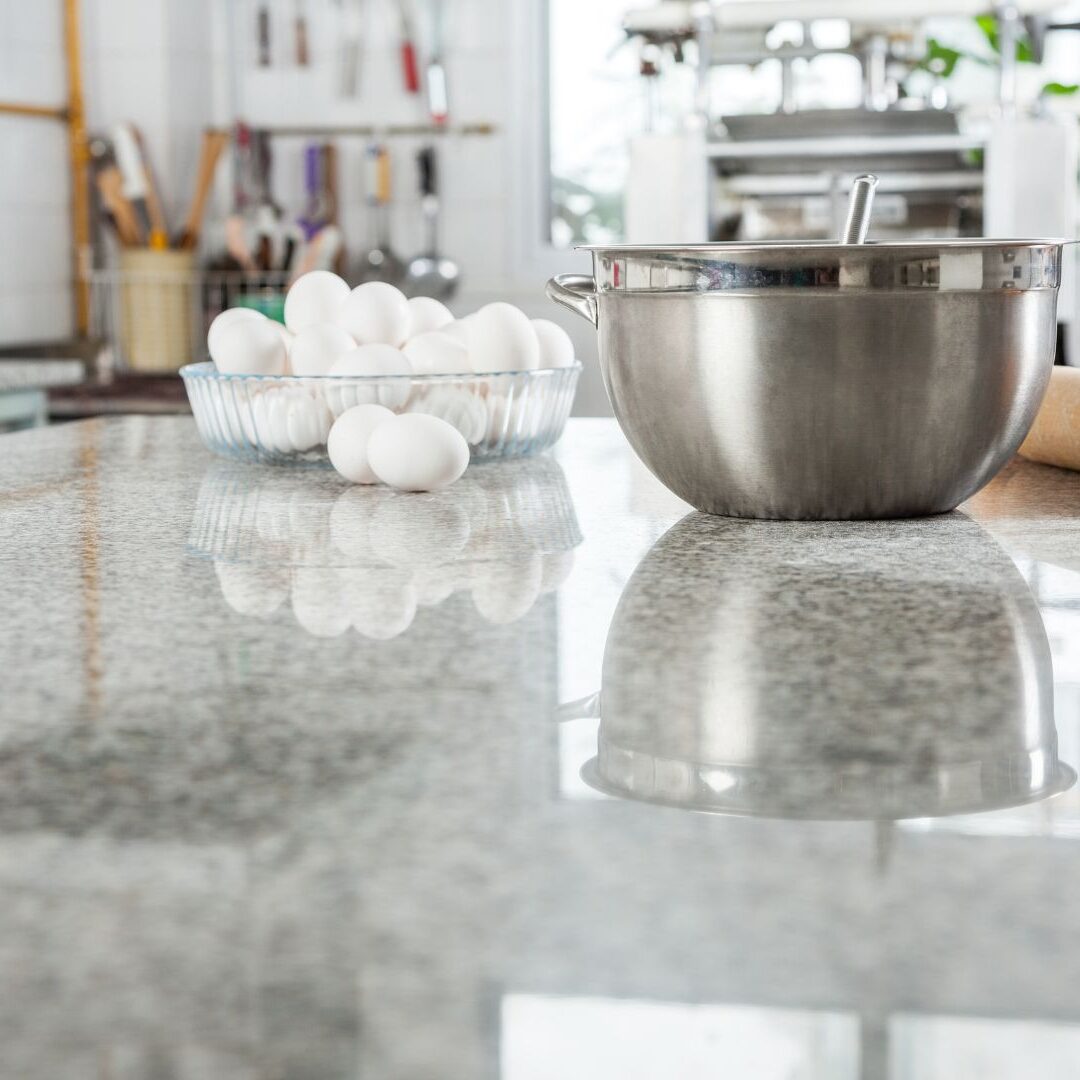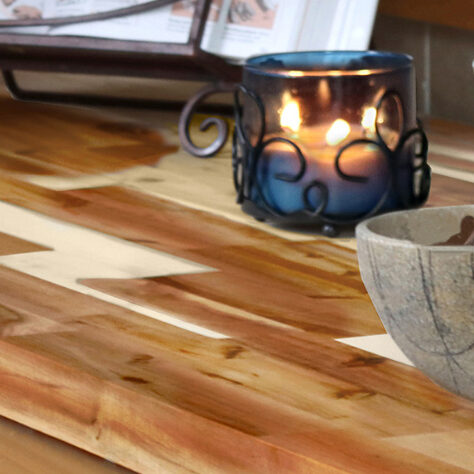Want a new countertop, but not sure which material works best for your needs? Let’s break down the differences between some of our most popular countertops.
Quartz vs. Granite Countertops
Both granite and quartz countertops are classic stone options with a variety of patterns and colors to choose from, but they differ in terms of maintenance and cost. Quartz is more expensive yet easier to maintain, while granite is more affordable but requires annual upkeep.
Granite is a natural stone, meaning that each slab is unique in its color and pattern. However, because it’s naturally occurring, it can be hard to make the colors and patterns consistent. Granite also requires a sealant; stones are naturally porous, so annual sealing is necessary to ensure the longevity of your granite countertop.
Quartz countertops, though made from natural quartz stone, are technically engineered by humans. Instead of being cut from naturally-occurring formations, quartz countertops are made of crushed stone, resulting in more consistent coloring and patterns. They also typically incorporate a low percentage of other materials, such as resin or pigments. This process results in a durable countertop with a luxurious finish, resistant to nearly all forms of damage—and has the higher price tag to prove it.
Solid Surface Countertops vs. Quartz
Both solid surface and quartz countertops have a stone-like finish. However, solid surface has a higher percentage of non-stone materials compared to quartz. Quartz countertops are about 90% crushed stone, while minerals only make up about two-thirds of solid surface countertops.
Because of this, solid surface countertops are more susceptible to scratches and heat damage. However, they’re also easier to clean and repair than quartz countertops, and they’re also more affordable.
Laminate Countertops vs. Quartz
Laminate countertops are an excellent choice for people who want to choose from a variety of unique colors and patterns but need to adhere to a strict budget. Laminates can be designed to mimic a variety of materials, from stone to wood to slate. You can also choose less natural designs, such as solid colors or swirling patterns.
Although laminate countertops are the most affordable, they’re also the most susceptible to damage. Laminate colors fade over time, and they’re notorious for burning or warping when exposed to direct heat. They also have noticeable seams that can fray over time. Although you’ll pay for more quartz, you’ll also have more peace of mind, knowing that your countertop can withstand years of baking, cooking, homework, and other kitchen activities.
Wood Countertops vs. Granite
Both wood countertops and granite countertops offer a classic look to any kitchen at an affordable price. They also both require sealants to prevent damage and ensure a long lifespan. The biggest difference between wood and granite countertops is an aesthetic choice. Wood countertops provide warmer tones and more of a farmhouse or vintage touch, while granite countertops offer cooler tones and a more modern feel.
